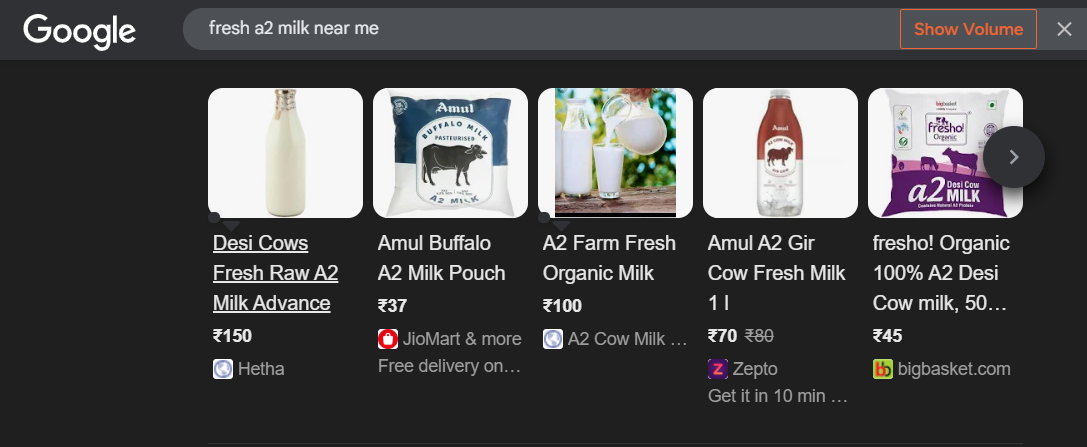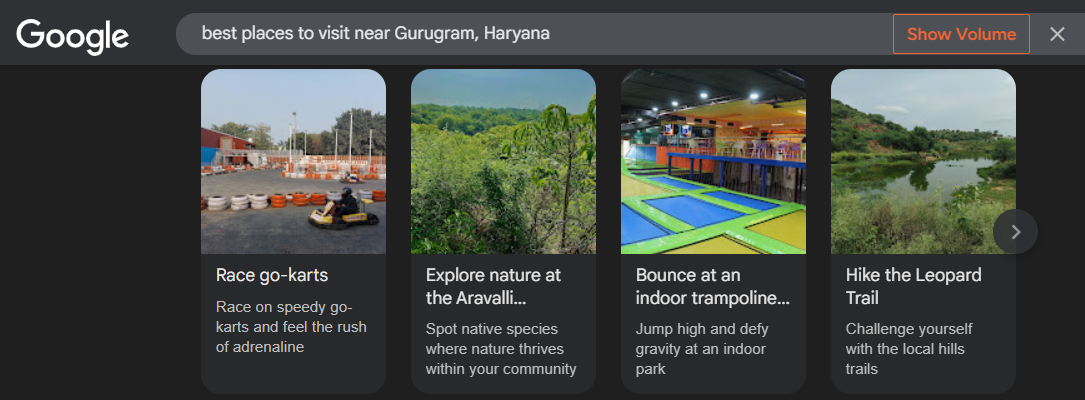
Why Do We Search?
Imagine you’re sitting at your kitchen table, phone in hand. Maybe you’re trying to remember the name of that actor from a movie you watched last night, or you’re looking for the nearest place that sells fresh Milk, bread and vegetables. Without thinking much about it, you open up Google and type in a few words. Here, you have your answers.

But if you pause for a moment, you might notice something interesting: every time you search, you’re actually hoping for something specific. Sometimes all you want a quick answer. And sometimes, you just want to shop, need a recipe, or a advice. It’s like your every search is a little question, hoping google will understands exactly what you mean.
Think about the last time you searched online. Was it to settle an argument with a friend? To find a new cafe? Or want to know the price of the new PS 5? This idea, that every search has a reason, is what we’re about to explore in this blog to take a closer look at what really happens when you ask Google for help.
What Is Search Intent?
Suppose, Its Friday and you’re planning a weekend trip. You type “best places to visit near me.” You’re not just randomly tossing words into the void; you’re hoping for suggestions, maybe even a hidden gem you haven’t heard about. That is your intent that came through form your keywords.

Search intent is like the secret ingredient in every online question. It’s the reason you look up “How to prepare for an interview” before a big interview, or “Domino’s delivery available at night” when you’re hungry late at night. The search engine’s job is to read between the lines and figure out what you really want.
So, in simple words, the purpose behind your search. It’s what you hope to find, learn, or do. And understanding this is the first step to understand as well how search engines work.
Also Read: – How to Choose the Right Digital Marketing Strategy for Your Business
Types of Search Intent
1. Informational Intent
Suppose someday, you want to learn“how to play chess”, or you’re wondering why the sky is blue. You search this on Google, hoping for a clear explanation or some quick facts.
- Example: “How to make cold coffee at home”
- Goal: Instructions, tips, or background information.

2. Navigational Intent
This search is kind of you already know where you want to go; you just want to go directly. Think of it like asking for directions to a specific place. You might type in the name of a website or brand, instead of the full web address.
- Example: “Instagram login” and “Swiggy dineout”
- Goal: To get to a particular site or page, fast.

3. Transactional Intent
You’re ready to take action. Maybe you want to buy something, sign up for a service, or download an app. These searches usually have words like “buy,” “order,” or “download.”
- Example: “Buy running shoes online”
- Goal: To make a purchase or complete a transaction.

4. Commercial Investigation
You’re checking out options before making a decision. It’s like window shopping online. You want to compare products, read reviews, or see what’s best for your needs.
- Example: “Best smartphones under 30000”
- Goal: Comparisons, reviews, or recommendations to help you make your buying decisions.

Each time you search, you’re following one of these paths, even if you don’t realise it. Recognising these types helps search engines (and content creators) give you exactly what you’re looking for, making your online experience satisfying.
Why Search Intent Isn’t Always So Simple
Search Intent is not always as simple for exemplar if someone search for “best headphones for travel.” On the surface, it sounds like a commercial investigation, they want to compare options. But maybe people also want to read reviews, watch a demo video, or want to know if a local store has them in stock. Their intent blends research, comparison, and maybe even a bit of local shopping.
Google is getting better at day by day on these subtleties. Instead of just matching keywords, Google look at search patterns in how people search, what they click on, and even what they do next and many more. This is the reason, when you search for something like “how to fix a leak tap,” you might see step-by-step guides articles, videos, and even local area plumbers numbers, all on the same results page.
So, while those 4 types of search intent are helpful, remember that real-life searches often mix and overlap. Understanding this helps you create content that meets people where they are, no matter how their needs shift along the way.
How to Identify a Keyword’s Search Intent
1. Check the Search Results Page (SERP)
- First, type your keyword into Google and look at the results on the first page.
- Make notes on what kinds of pages appear at the top: Are they guides, product pages, reviews, or something else?
- Look for special features like “People Also Ask” boxes, shopping results, or maps. These insight also let you understand what most people want when they search for that keyword.
2. Pay Attention to the Words in the Query
Certain words give the intent. For example,
- Who
- What
- How to
- Tips
- Best
- Affordable
- Buy
- Deal
- Learn
- Easy
- Quick
- “how to” or “tips” mean someone wants to learn, while “buy” or “deal” point to shopping.
- Also the order of words matters, too. e.g “Best laptops for students” is about comparison and advice, while “laptop deals” is about buying.
3. Use a Keyword Tool for Quick Insights
- Tools like Semrush, Mangools KWFinder, and SEO.AI can automatically show you the likely intent behind each keyword.
- These tools bifurcate keywords into 4 types of keywords, and sometimes let you filter or sort by intent, which will help you save time in guesswork.
Also Read: – The Power of Content Marketing: How to Build an Engaging Strategy
How to Optimise Content for Search Intent
1. Use the Trendy Content Format
Start by looking at the top results for your target keyword. Are they blog posts, product pages, videos, or something else? The format that appears most often is what search engines believe people want.
- If most results are guides or how-tos: Write a clear, step-by-step article.
- If you see a lot of product pages: Focus on showcasing your product’s features and benefits.
- If videos dominate: Consider creating a video or including one in your content.
2. Make Your Content Easy to Read and Digest
People don’t want to dig through walls of text to find what they need. Break up your content and use elements that make information easy to scan:
- Headings and subheadings: Guide readers through your content and help them find answers fast.
- Bullet points and numbered lists: Perfect for instructions, features, or quick tips.
- Short paragraphs: Keep each idea clear and focused.
- Images, charts, or infographics: Sometimes a picture is really worth a thousand words.
3. Optimise Your Title Tag and Meta Description with Search Intent Keywords
Your title tag and meta description are what people see before they even click. Make sure they clearly reflect the search intent and include the main keywords.
- Title tag: Use words that match the user’s intent. For example, if the intent is informational, try “How to Care for Indoor Plants: A Simple Guide.”
- Meta description: Summarise what your page offers and why it’s the right answer for the search. Be clear, specific, and inviting.
Conclusion
Understanding the types of search intent helps you see what users really want when they search. Recognising the importance of search intent ensures your content answers those needs clearly, improving both user experience and search visibility. Effective search intent optimisation means aligning your content’s format, tone, and information with the user’s goal. This approach creates more relevant, useful content that performs better and builds trust without relying on tricks or shortcuts.



